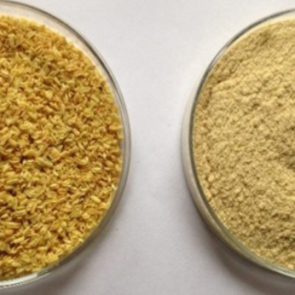Description
- Gum arabic, also known as acacia gum, chaargund, char goond, or meska, is a natural gum made of hardened sap taken from two species of the acacia tree; Acacia Senegal and Acacia seyal. The gum is harvested commercially from wild trees throughout the Sahel from Senegal and Sudan to Somalia, although it has been historically cultivated in Arabia and West Asia.
- Gum Arabic is a complex mixture of glycoproteins and polysaccharides. It was historically the source of the sugars arabinose and ribose, both of which were first discovered and isolated from it, and are named for it.
- Gum arabic is used primarily in the food industry as a stabilizer. It is edible and has E number E414. Gum arabic is a key ingredient in traditional lithography and is used in printing, paint production, glue, cosmetics and various industrial applications, including viscosity control in inks and in textile industries, although less expensive materials compete with it for many of these roles.
- While gum arabic is now produced mostly throughout the African Sahel, it is still harvested and used in the Middle East. For example, Arab populations use the natural gum to make a chilled, sweetened, and flavored gelato-like dessert.
- Gum arabic is a type of gum that is used in everything from a food stabilizer to inks and textiles. It comes from the hardened sap of the Acacia Senegal and the Acacia Seyal trees.
- This natural gum is usually free of color, odor, and taste. When the sap seeps from the tree and hits the air, it often hardens to form an oval the size of a pigeon’s egg. It can almost be fully dissolved in its own volume of water. When sold alone, it can be in the form of syrup, powder, oil, chunks, or pellets.
- Sap is grown for commercial use in Sudan, Somalia, Senegal, Arabia, Egypt, West Asia, and other countries. The sub-Saharan region has been given the moniker “the gum belt” for its high volume of gum arabic harvested. Sap trappers stimulate its flow by carefully stripping pieces of the bark once a year without injuring the tree. They are then able to extract the sap for approximately five weeks per year, ten years per tree.




